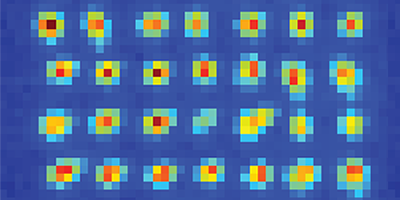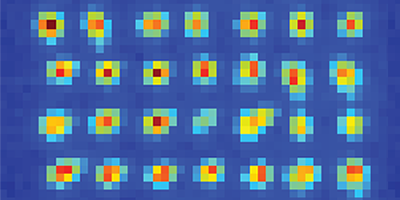Targeting Single Qubits
Quantum computation is still in its early stages. But as more and more qubits are assembled together in a quantum processor, the challenge becomes that of controlling each individual qubit, while not disturbing the nearby ones. In a new experiment with a two-dimensional array of 49 atomic qubits, researchers have demonstrated full control over single qubits using a combination of two electromagnetic fields—one in the microwave and the other in the visible range.
Atomic systems are considered for future quantum computers because they offer long-term stability. Certain atoms have electronic energy states that can act as the 0 and 1 of a qubit. Light fields can perform basic logic operations, such as turning a 0 into a 1. The problem is that this light often requires a long wavelength, making it hard to focus on just one qubit.
For their qubit system, Mark Saffman and his colleagues from the University of Wisconsin, Madison, loaded cesium atoms into a two-dimensional optical lattice with 3.8-micrometer site-to-site spacing. The cesium atoms have qubit states that respond to 9.2-gigahertz microwaves (whose wavelength is much larger than the qubit spacing). To select a single qubit, the team detuned their microwave emitter away from 9.2 gigahertz and then focused a laser beam (wavelength 459 nanometers) on a single site of their choosing. The laser light induces a Stark shift that alters the atomic energy levels, so that only the chosen qubit responds to the detuned microwaves. This scheme, based on a previously developed targeting technique, offers, for the first time, full control over all the possible logic operations on a single qubit in a two-dimensional array.
This research is published in Physical Review Letters.
–Michael Schirber





